We have just arrived in Tirana, the first ex-communist capital we are going to visit in this year’s travels.
Tirana is not the first ex-soviet capital I know. The first one was Prague. I went there on a University trip in 1993. They had just broken up with Slovakia, so they were still very communist. I found the experience of visiting a different culture unforgettable. I wonder how much Tirana has changed since it abandoned the communist system more than twenty years ago.
We arrive by bus at 12.00. The journey has been smooth, the bus was quite comfortable. Now, finding the accommodation will be more challenging in a big city. Getting a taxi will be the quickest and most efficient way, as we have not done any research on public transport.
Everyone seems to know everyone in Albania, even if they live miles apart. The bus driver offers to look for a taxi for us. The taxi driver takes us to his car, it doesn’t have any taxi sign on the top, nor a taxi meter. He cannot understand the question: “How much will it be?” We leave and look for an official taxi.
But there isn’t any, a bit weird. You would expect a queue of taxis around a bus station. Perhaps, they don’t exist in Albania. Another guy approaches: “Taxi?” This one speaks half English.
Us: How much is it?
Him: Where are you going?
We show him the map and the name of the hotel. It is close to a big avenue. He doesn’t have a clue where it is. He goes back to the car, perhaps to get its sat nav. No, he puts his glasses on.
Him: 500 leke (about €3.5)
We are ready to go. Nope, he stops again to ask a colleague where the hotel is. Let me get this straight: he has given us a price to take us somewhere and he doesn’t know how far it is?
His friends gives him directions. Can he not come with us? Our taxi driver now looks confident. We are off.
We keep an eye on the map, we are roughly going in the right direction. He may even take us there!
Gary and I see official taxis driving around. So they do exist in Albania, we must remember to take one of those next time.
We arrive at the big avenue. He looks doubtful again. We drive up, we drive down, he turns off to the left, he gets stuck in a narrow road, he asks a few locals, no luck. We go back to the big avenue.
He finds a proper taxi driver. He asks him, now the third person! The official taxi driver doesn’t know.
Now, he has a brilliant idea. Do you have a telephone number? He eventually speaks to the hotel and gets directions. He seems to know now where we are going. He sounds happy and continues to pride himself on this action, muttering to himself: “I knew it all along”.
We turn off to another narrow street. He starts slowing down. No, this can’t be true. Yes, no, yes, he is going to ask again, to the fourth person!
Someone is coming towards us, the owner of our hotel, he has decided to come and fetch us. We are safe! “Come on, pay him and let’s get out of here” Gary says. We pay him the agreed price, but I am sure he has made a loss on his journey. That was an stressful experience, especially for him.
We can now relax and enjoy Tirana.
Our hosts welcome us warmly and they offer two rooms for us to choose: a massive one, with at least seven beds, a washing machine and TV, it looks more like an apartment; the second room, an attic. The latter sounds quirky. We go and have a look.
It is not only quirky but weird. We need to climb very steep and narrow steps to get to it (like a loft ladder). The room door opens upwards and backwards and we go through a small box to get into the room. Very bizarre.
A hatch into the room, right in the middle. When closed it can be used as a table! GDR
Very awkward. But hilarious.
It would contravene every health and safety standard, every fire standard you could possibly imagine. We check how we would escape, if anything happened. On your way up you pass a small curtain, numerous hot water heaters are concealed behind.
Very tricky to escape in case of fire.
Very sophisticated lock!
The attic has a balcony, with very nice views of Tirana’s suburbs. So the risk is worth the reward.
The way out to the balcony has been protected from the rain with a cheap plastic roof. Even me, clueless at reading buildings, can notice things like that.
This room is a lot of fun. We like it, we keep it.
It is nearly lunchtime. We walk towards the centre which is only 20 minutes from here.
Where the hotel is looks quite poor. We are not sure whether this is a cheap area, or if Tirana is generally like this.
Lots of students seem to quite enjoy the cafe culture. Gary looks at me: “Have you started to feel the vibe yet?”
Such a nice quality of life…
A few metres down, the cafes get more lively and sophisticated. This particular one is playing really loud clubby music.
The cafe sits underneath a block of flats, supported by multicolour, Disney type columns.
Tirana is a very young city. Everywhere you look, there are lots of young people around. They look chic, trendy, loud, happy. They seem to enjoy displaying modernism, to eagerly wanting to detach themselves from the dark past of their country. Tirana is moving on with the times.
Ten minutes later we come across our first site: The Pyramid, a communist icon.
It was designed by one of the dictator’s relatives. Once a symbol of national pride and power. Now, vandalised, abandoned, derelict.
A monstrous monument, as described in our guide.
I feel a bit sad they have not been able to find any use for it. Maybe they prefer to leave it as it is. They may cause mayhem otherwise. The wounds may still be open.
Ten minutes along the road, there is another communist monument: The white congress, again by the same designer. This one has been turned into an exhibition place. Today it is holding a cultural exhibition of the arts of Tirana.
At the entrance, there is a a car covered in a typical Albanian hand-made table cloth. Those table cloths that my grandmother used to knit for my cousin and I for our wedding day, and which I still have them unpacked at the back of a wardrobe in my mother’s place back in Spain. Maybe we can adapt ours for Dora. GDR
An official Albanian building from the communist era. Square, functional, decoration free. I like it.
We pass the dictator’s house, in the middle of Tirana. The house doesn’t look that impressive for the ruler of the country. Maybe it was a luxury mansion compared to the people’s houses back then.
We keep going around. Another building is attached to the main one. I suppose it was still a big house.
I like the style. Once again, straight lines, simple, artless. The columns catch my attention, the designer has played with layers of slates to create nice patterns.
The garden is massive, with enough space for a large pond.
Tirana is bathed by a wide river (I can’t think of the name right now). It also has mountains in the background. We can’t go past without photographing them.
Tirana still displays several signs of poverty and underdevelopment. Most blocks of flats need a bit of a makeover.
They forgot to render some.
Cobwebs of cables cover the city. This wouldn’t be allowed in the UK. They have not reached that level of health and safety sophistication. It may come with the time.
Although the city does already have modern buildings, this one still under construction, and using an awful lot of concrete!
I really liked this one with the angled panels which I presume form some sort of shading.
Would love to know what the material is. I wonder whether this is local architects or international.
The first green space we have seen so far,
Another match box building style. On this one, the typical boring grey communist colour has been replaced with vivid yellows and reds.
We are now five minutes from the main square. The traffic here in the centre is quite heavy, plus, it is a really hot day. It feels quite muggy, there is a general feeling of lack of air around us.
There are a couple of interesting things to see around here: the main square and the national history museum. We head off to the latter.
The pride of the fight against capitalism is reflected on a large mosaic displayed at the top of the entrance. The woman leading the group must be an icon in Albania. We will see her later on in our travels across the country.
The museum covers the entire history of Albania, from the first settlements in the Palaeolithic era up today. I always liked history back at college. Travelling has increased that interest. The more countries I visit the more I understand, the more I remember, the more I learn and the more I enjoy.
From here, there is a nice view of the main square. I am just about to make out the statue in the middle. I will wait until I get closer to get the mandatory shot.
And here it is. I have little to say about this. There is no information around, not even the name of this fellow!
And… that’s it for Tirana. On the way out of the square, there is a brand new tourist information office. Albania is realising the power of tourism. And now the county is knocking at the doors of joining the EU, funding is starting to arrive which is mainly why this office has been opened.
We pop in, the staff are very friendly. They talk through the main sites with us, we have seen them all. There are only two left which are on our way to the hotel.
One, mother Teresa’s square. Why does she have a special place? I believe she was Albanian.
The second site, the monument of independence. It looked more impressive on the photos we saw at the tourist information office.
It is 18.30, the perfect time to go back to the hotel, have a good session of WI-FI and go out for dinner. Tonight we are not going to follow the guide’s recommendations. We have booked a table in a nice fish restaurant which we saw this morning. “We will bring fresh fish for tonight and you will be able to choose” the waiter said. He persuaded us. The reservation is at 20.30.
SM
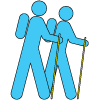
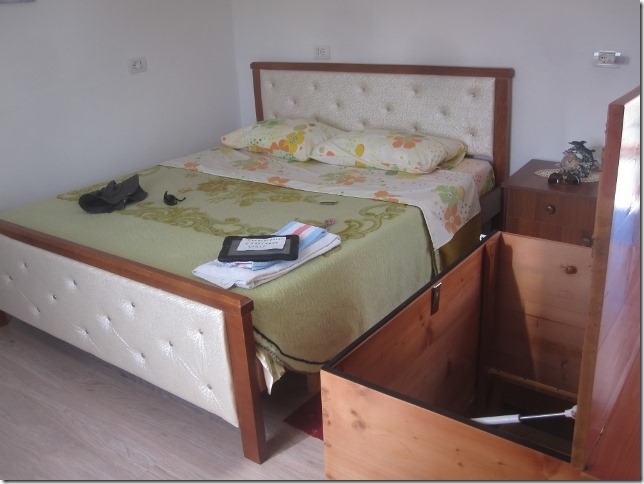
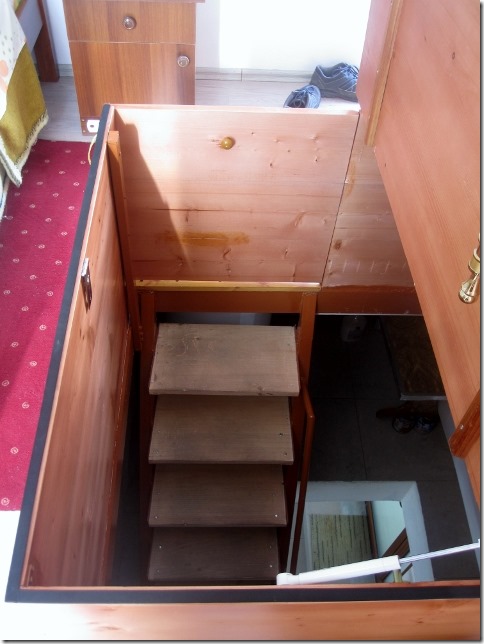
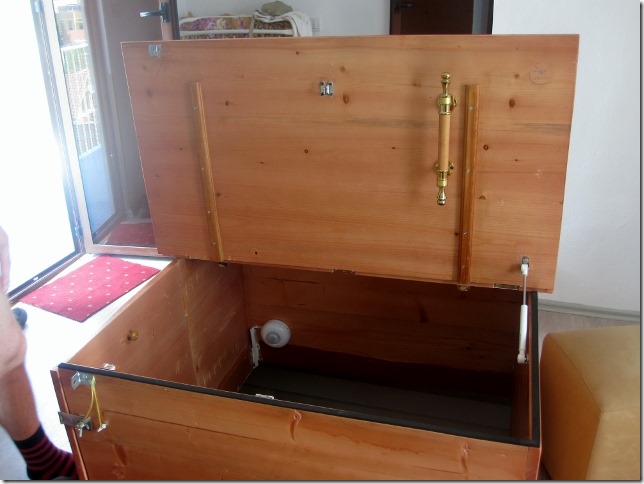
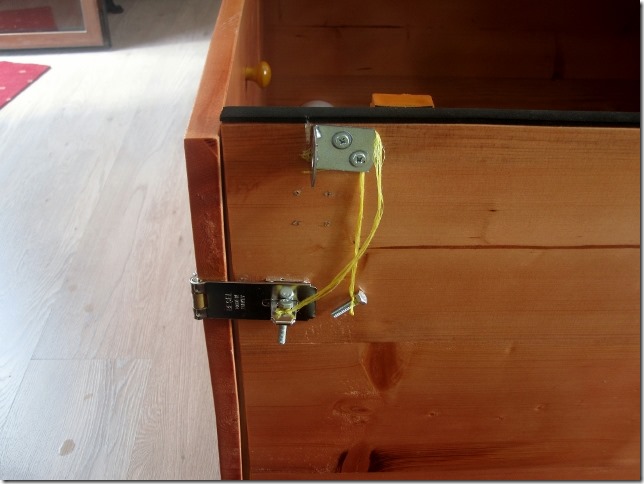
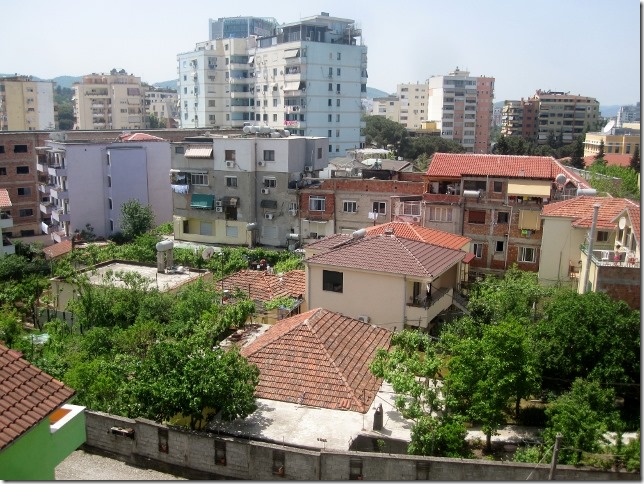
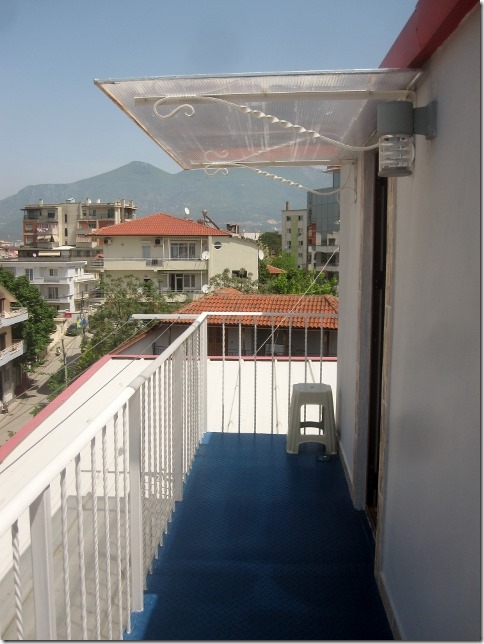
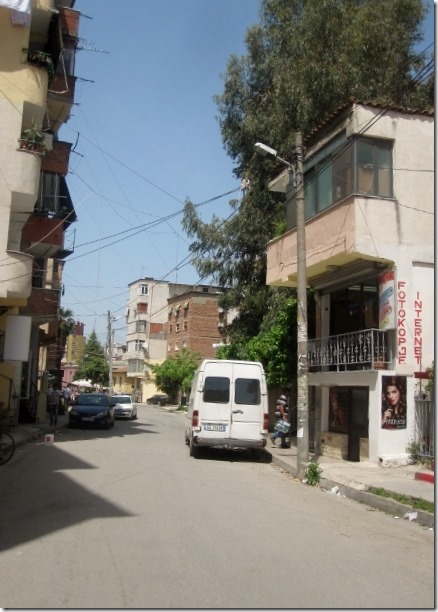
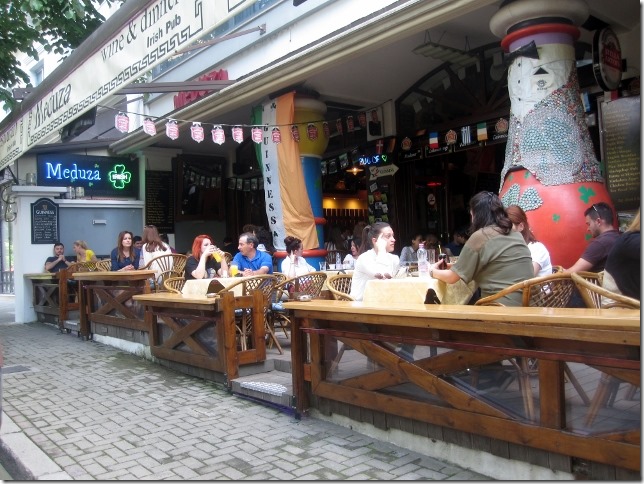
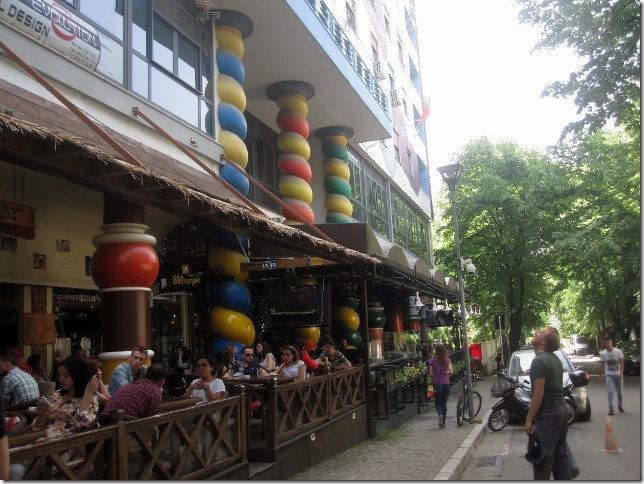
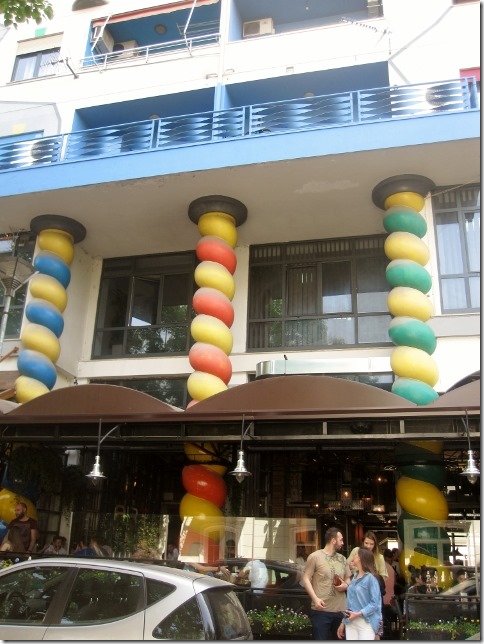
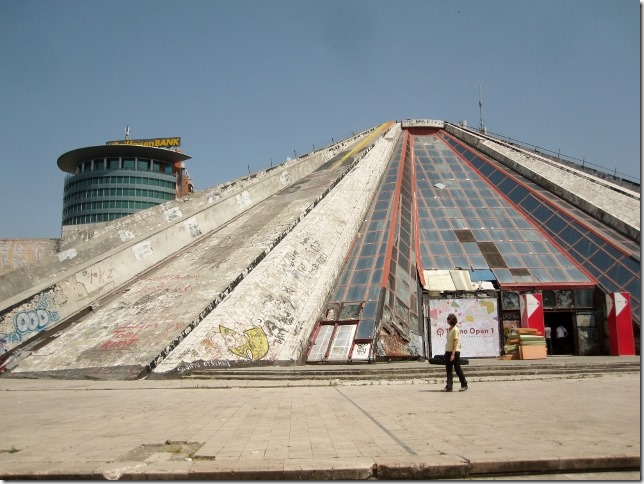
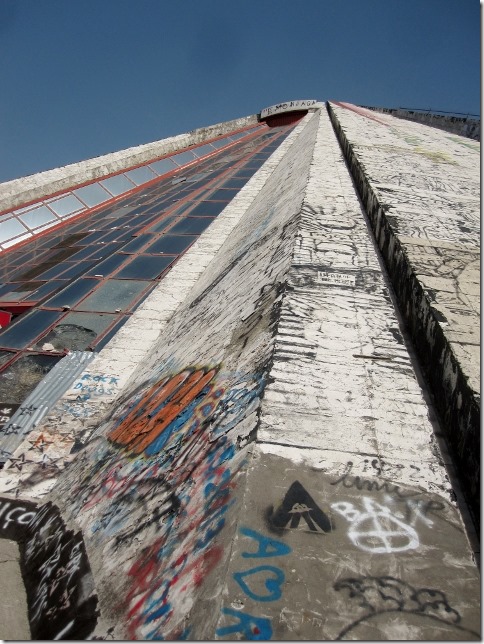
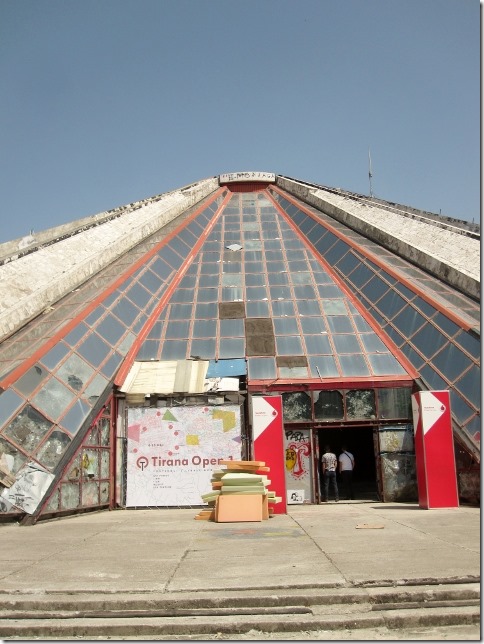
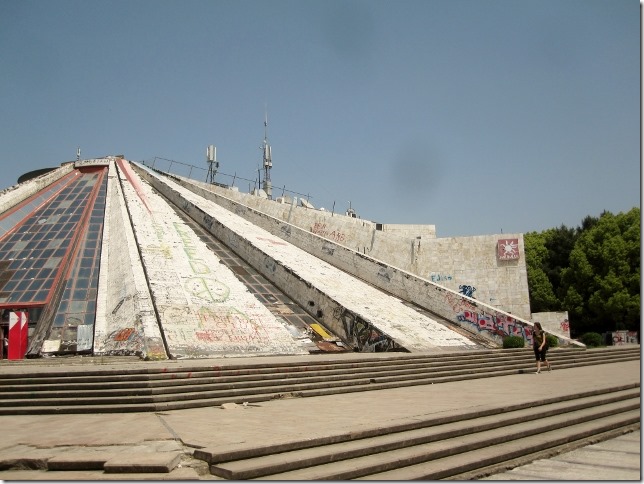
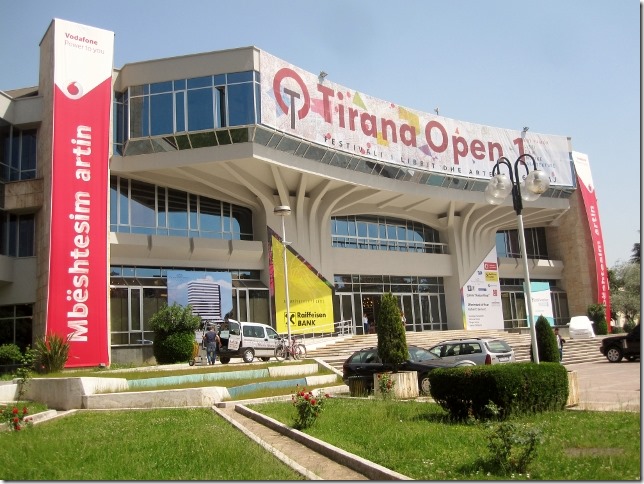
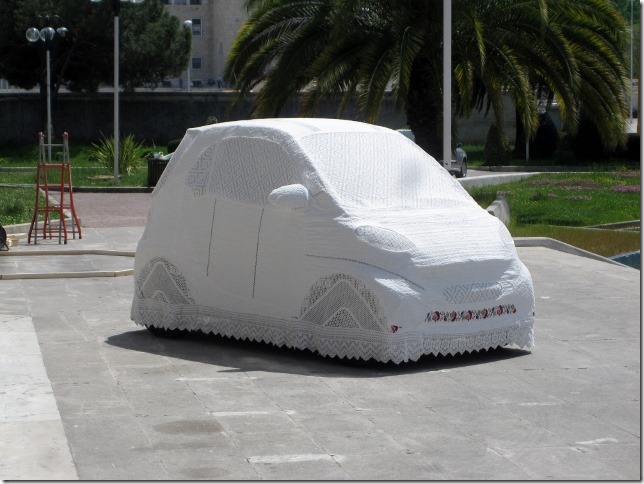
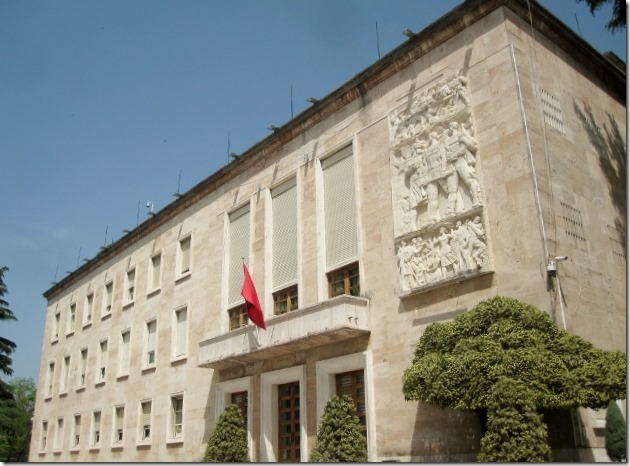
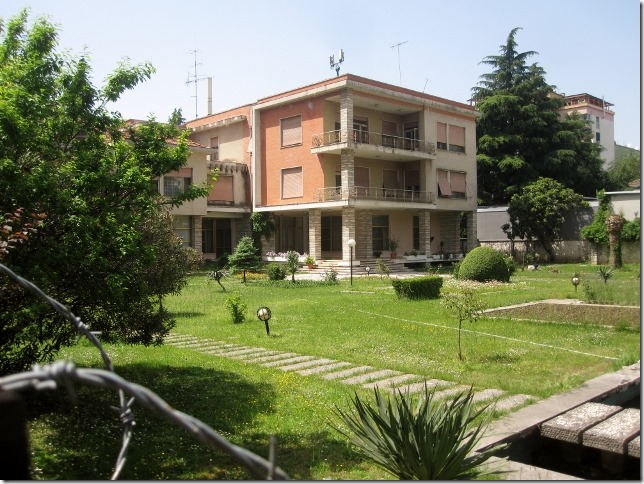
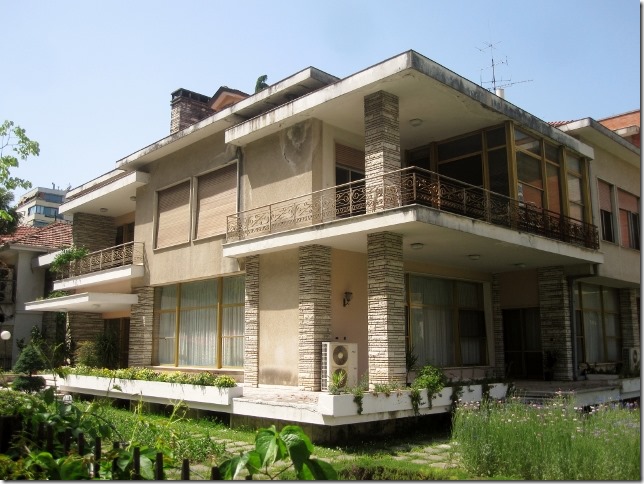
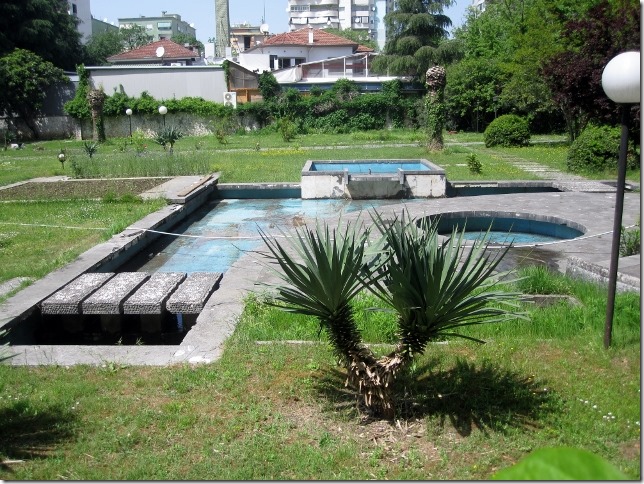
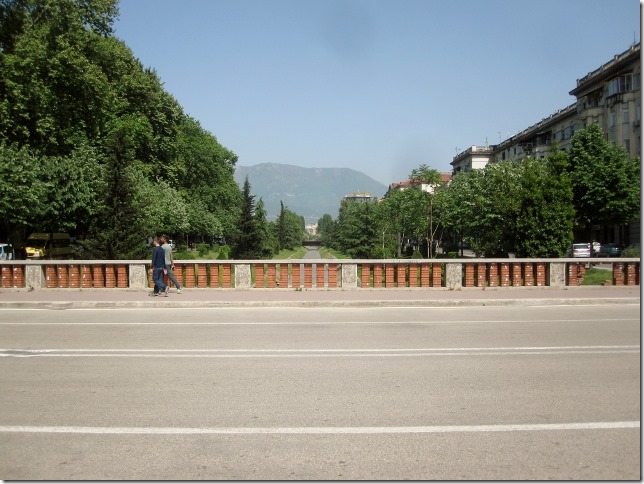
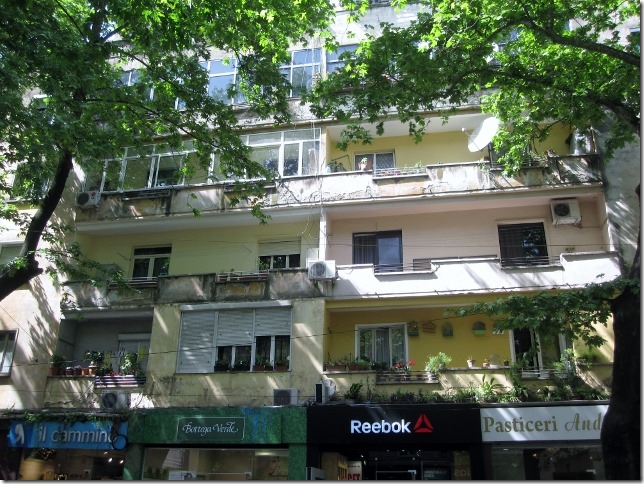
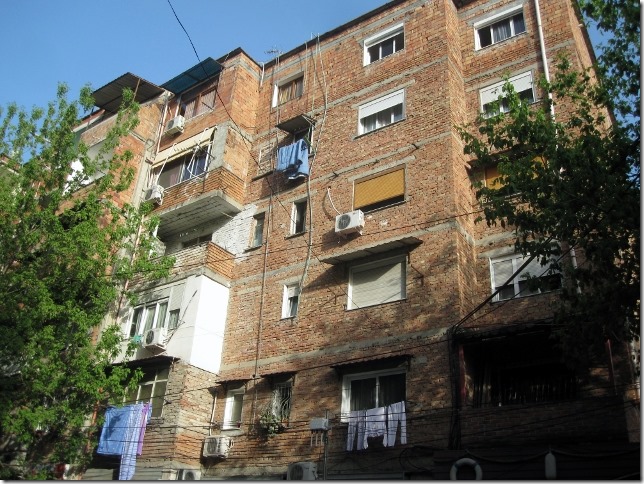
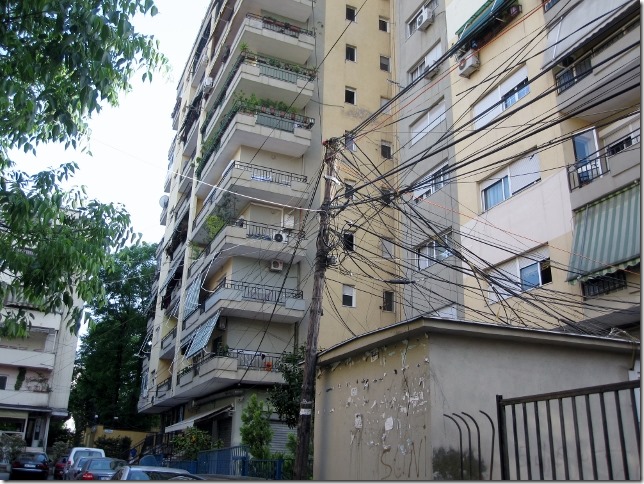
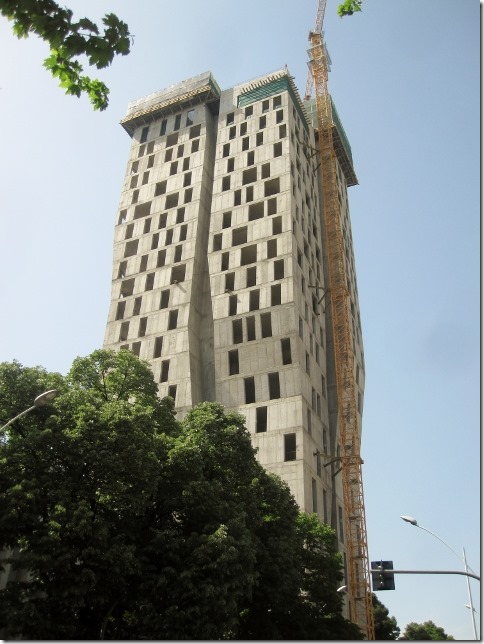
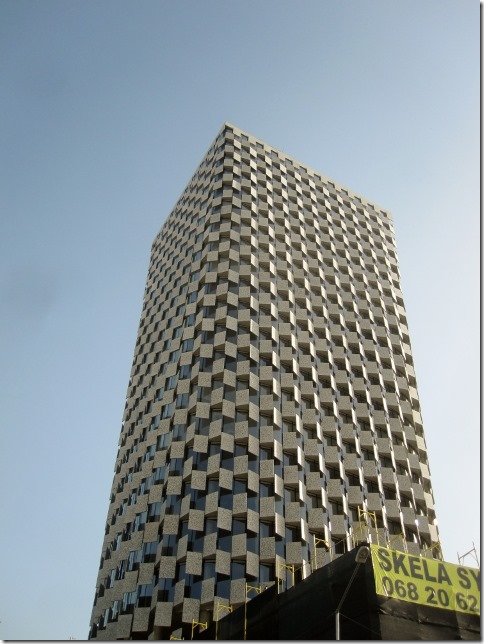
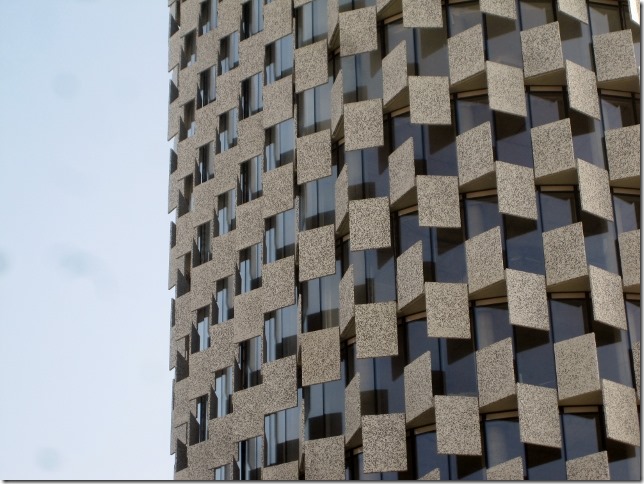
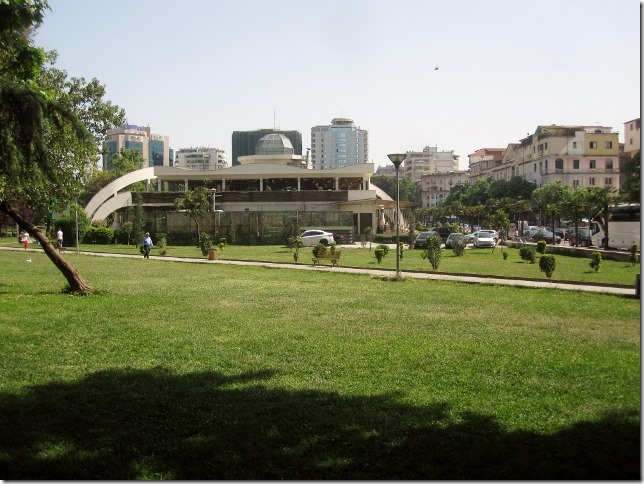
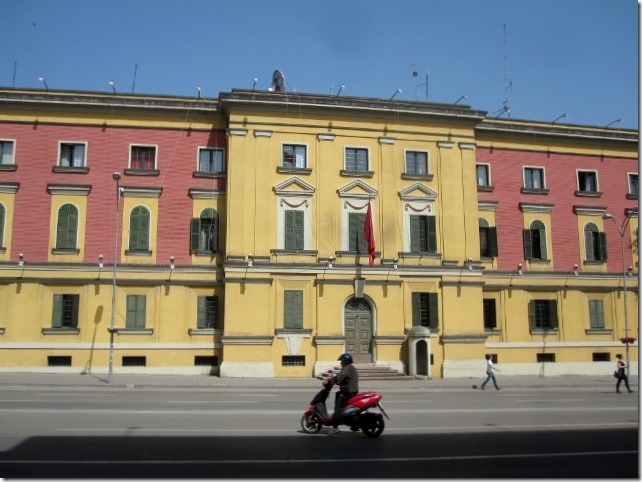
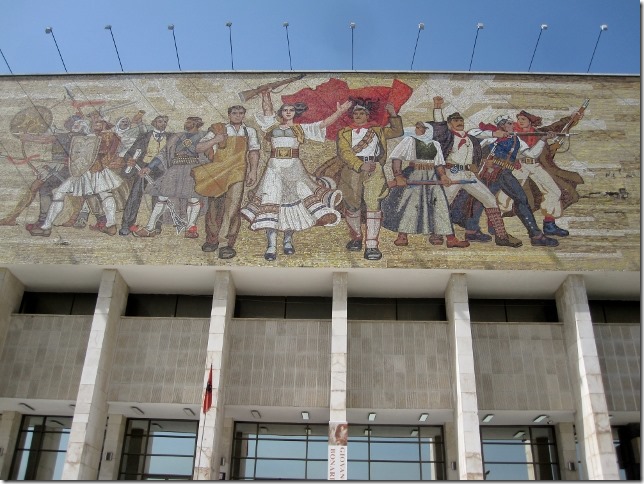
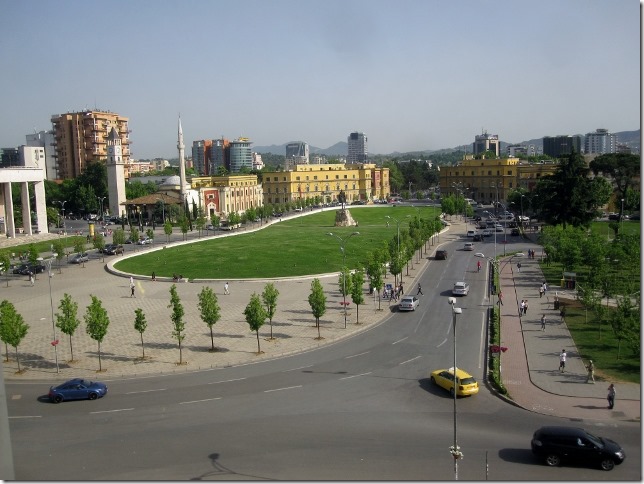
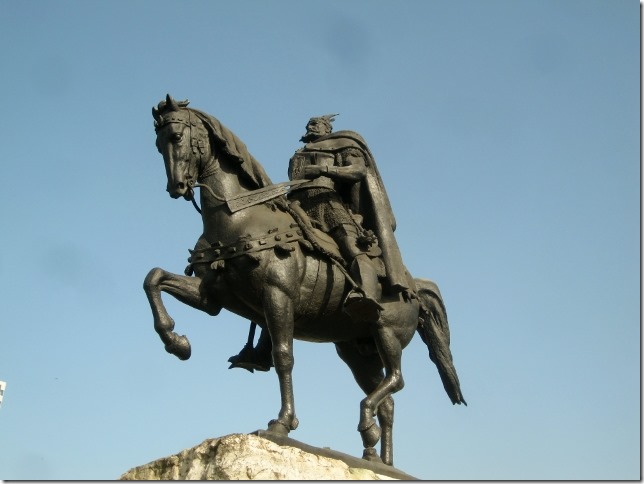
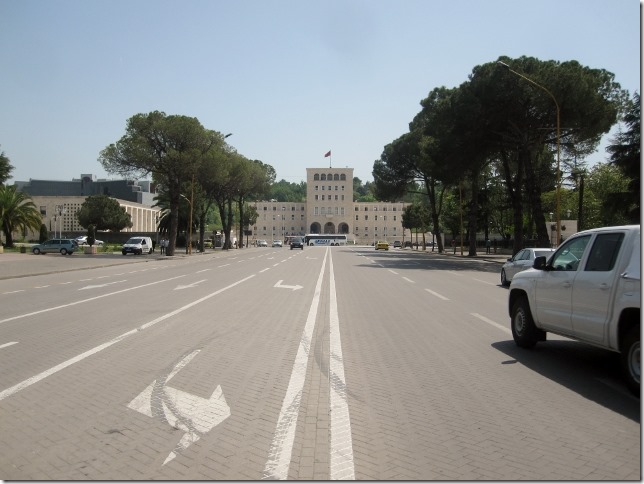
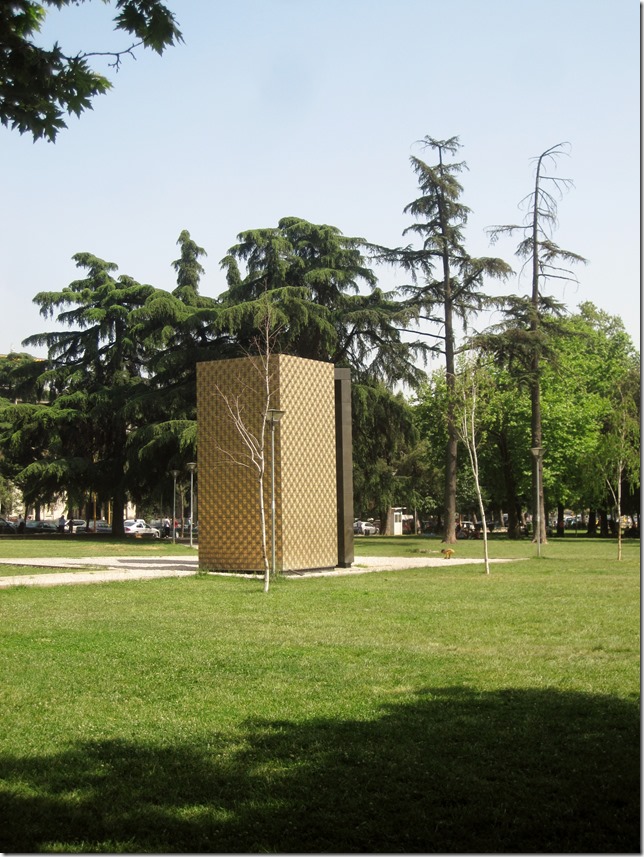






Tirana me parece una ciudad bonita, no me extraña que disfrutes recorriendo países y ciudades, yo disfruto observándolas en el blog. La cafetería es muy chula , se ve que hay gente joven.
¿Esta autorizado esa clase de coches que ofrecen servicio de taxis sin serlo?
Algunas cosas estan fuera de control en estos paises